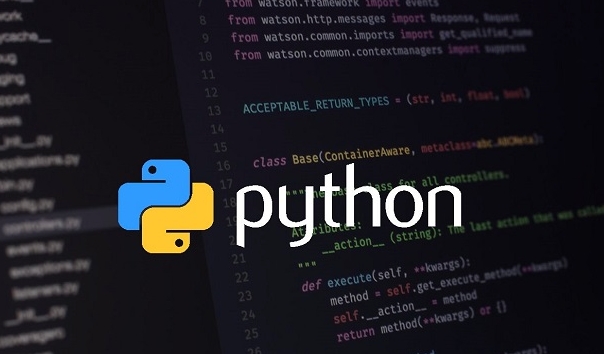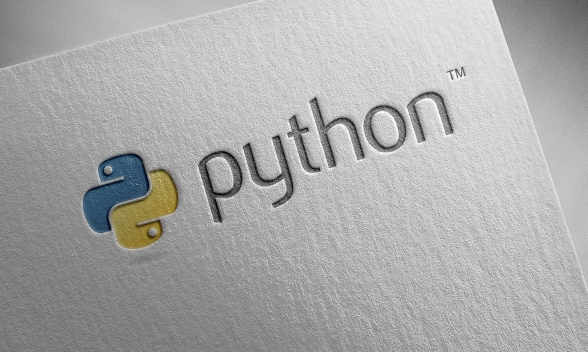The descriptor protocol is a mechanism used in Python to control attribute access behavior. Its core answer lies in implementing one or more of the __get__(), __set__() and __delete__() methods. 1. __get__(self, instance, owner) is used to obtain attribute value; 2. __set__(self, instance, value) is used to set attribute value; 3. __delete__(self, instance) is used to delete attribute value. The actual uses of descriptors include data verification, delayed calculation of properties, property access logging, and implementation of functions such as property and classmethod. The relationship between descriptors and property lies in that property is a simplified encapsulation of descriptors, and essentially uses a descriptor mechanism. Descriptors are divided into two categories: 1. The priority of data descriptors (implementing __set__ or __delete__) is higher than the instance attribute; 2. The priority of non-data descriptors (implementing only __get__) is lower than the data descriptor but higher than the class attribute. Understanding descriptors helps to have an in-depth understanding of the underlying logic of Python attribute systems and their application in framework development.

In Python, a descriptor is an object that implements a specific protocol, which includes one or more of __get__() , __set__() and __delete__() methods. Their core function is to control the access behavior of attributes . For example, when you access a property of a certain class, if the property is a descriptor object, Python will call its __get__() or __set__() methods to handle it.

This sounds a bit abstract, but in fact you have used it in your daily life. For example, property , classmethod and staticmethod are all implemented based on the descriptor mechanism.

What is the descriptor protocol?
A descriptor protocol refers to a class that defines one or more of the following three methods:
-
__get__(self, instance, owner): used to obtain attribute value -
__set__(self, instance, value): used to set the attribute value -
__delete__(self, instance): used to delete attribute values
As long as a class implements any of the methods, it is a descriptor. These methods are automatically called when it is accessed as a class attribute of another class.

To give a simple example:
class DescriptorExample:
def __get__(self, instance, owner):
return "Getting the value"
class MyClass:
attr = DescriptorExample()
obj = MyClass()
print(obj.attr) # Output: Getting the value In this example, accessing obj.attr actually triggers the descriptor's __get__() method.
What is the practical use of descriptors?
The main purpose of descriptors is to encapsulate property access logic , allowing you to control the behavior of properties more refinedly. Common application scenarios include:
- Data verification (such as checking whether the assignment is legal)
- Delay calculation properties (similar to
@property's effect) - Attribute access logging
- Implement built-in functions such as
propertyandclassmethod
Let’s give an example of data verification:
class PositiveInteger:
def __init__(self, name):
self.name = name
def __set__(self, instance, value):
if not isinstance(value, int) or value <= 0:
raise ValueError("must be a positive integer")
instance.__dict__[self.name] = value
class Person:
age = PositiveInteger('age')
p = Person()
p.age = 25 # Normal p.age = -1 # Throw ValueError This ensures that age attribute is always legal.
What is the relationship between descriptor and property?
property is a built-in class in Python, which is essentially implemented using the descriptor mechanism. You can think of it as a simplified encapsulation of the descriptor.
For example, the following code:
class Circle:
def __init__(self, radius):
self._radius = radius
@property
def radius(self):
return self._radius
@radius.setter
def radius(self, value):
if value <= 0:
raise ValueError("radius must be greater than 0")
self._radius = value @property and @radius.setter here are actually defining a descriptor object and mounting it as a class attribute on Circle.radius .
So it can be said that property is a high-level interface for descriptors , suitable for most ordinary scenarios; writing descriptors directly is more suitable for situations where more flexible control is required.
How to distinguish between data descriptors and non-data descriptors?
This is a key point in descriptor classification:
- Data descriptor : Descriptor implements
__set__()or__delete__()descriptor - Non-data descriptor : Only descriptors that implement
__get__()
The difference is that the attribute search order is different. For class instances, the priority order of finding properties is as follows:
- Data descriptor
- Instance properties (in
__dict__) - Non-data descriptor
- Class attributes
This means that if you define a data descriptor, it can overwrite the instance's own attribute value.
Basically that's it. Descriptors may seem a bit underlying, but are very useful when building elegant, maintainable class structures, especially often found in framework development. Although you don't necessarily write it yourself, understanding how it works will help you better understand Python's attribute system.
The above is the detailed content of What is descriptor in python. For more information, please follow other related articles on the PHP Chinese website!

Hot AI Tools

Undress AI Tool
Undress images for free

Undresser.AI Undress
AI-powered app for creating realistic nude photos

AI Clothes Remover
Online AI tool for removing clothes from photos.

Clothoff.io
AI clothes remover

Video Face Swap
Swap faces in any video effortlessly with our completely free AI face swap tool!

Hot Article

Hot Tools

Notepad++7.3.1
Easy-to-use and free code editor

SublimeText3 Chinese version
Chinese version, very easy to use

Zend Studio 13.0.1
Powerful PHP integrated development environment

Dreamweaver CS6
Visual web development tools

SublimeText3 Mac version
God-level code editing software (SublimeText3)

Hot Topics
 Polymorphism in python classes
Jul 05, 2025 am 02:58 AM
Polymorphism in python classes
Jul 05, 2025 am 02:58 AM
Polymorphism is a core concept in Python object-oriented programming, referring to "one interface, multiple implementations", allowing for unified processing of different types of objects. 1. Polymorphism is implemented through method rewriting. Subclasses can redefine parent class methods. For example, the spoke() method of Animal class has different implementations in Dog and Cat subclasses. 2. The practical uses of polymorphism include simplifying the code structure and enhancing scalability, such as calling the draw() method uniformly in the graphical drawing program, or handling the common behavior of different characters in game development. 3. Python implementation polymorphism needs to satisfy: the parent class defines a method, and the child class overrides the method, but does not require inheritance of the same parent class. As long as the object implements the same method, this is called the "duck type". 4. Things to note include the maintenance
 Explain Python generators and iterators.
Jul 05, 2025 am 02:55 AM
Explain Python generators and iterators.
Jul 05, 2025 am 02:55 AM
Iterators are objects that implement __iter__() and __next__() methods. The generator is a simplified version of iterators, which automatically implement these methods through the yield keyword. 1. The iterator returns an element every time he calls next() and throws a StopIteration exception when there are no more elements. 2. The generator uses function definition to generate data on demand, saving memory and supporting infinite sequences. 3. Use iterators when processing existing sets, use a generator when dynamically generating big data or lazy evaluation, such as loading line by line when reading large files. Note: Iterable objects such as lists are not iterators. They need to be recreated after the iterator reaches its end, and the generator can only traverse it once.
 How to iterate over two lists at once Python
Jul 09, 2025 am 01:13 AM
How to iterate over two lists at once Python
Jul 09, 2025 am 01:13 AM
A common method to traverse two lists simultaneously in Python is to use the zip() function, which will pair multiple lists in order and be the shortest; if the list length is inconsistent, you can use itertools.zip_longest() to be the longest and fill in the missing values; combined with enumerate(), you can get the index at the same time. 1.zip() is concise and practical, suitable for paired data iteration; 2.zip_longest() can fill in the default value when dealing with inconsistent lengths; 3.enumerate(zip()) can obtain indexes during traversal, meeting the needs of a variety of complex scenarios.
 Explain Python assertions.
Jul 07, 2025 am 12:14 AM
Explain Python assertions.
Jul 07, 2025 am 12:14 AM
Assert is an assertion tool used in Python for debugging, and throws an AssertionError when the condition is not met. Its syntax is assert condition plus optional error information, which is suitable for internal logic verification such as parameter checking, status confirmation, etc., but cannot be used for security or user input checking, and should be used in conjunction with clear prompt information. It is only available for auxiliary debugging in the development stage rather than substituting exception handling.
 How to make an object a generator in Python?
Jul 07, 2025 am 02:53 AM
How to make an object a generator in Python?
Jul 07, 2025 am 02:53 AM
To make an object a generator, you need to generate values ??on demand by defining a function containing yield, implementing iterable classes that implement \_\_iter\_ and \_next\_ methods, or using generator expressions. 1. Define a function containing yield, return the generator object when called and generate values ??successively; 2. Implement the \_\_iter\_\_ and \_\_next\_\_\_ in a custom class to control iterative logic; 3. Use generator expressions to quickly create a lightweight generator, suitable for simple transformations or filtering. These methods avoid loading all data into memory, thereby improving memory efficiency.
 What are Python type hints?
Jul 07, 2025 am 02:55 AM
What are Python type hints?
Jul 07, 2025 am 02:55 AM
TypehintsinPythonsolvetheproblemofambiguityandpotentialbugsindynamicallytypedcodebyallowingdeveloperstospecifyexpectedtypes.Theyenhancereadability,enableearlybugdetection,andimprovetoolingsupport.Typehintsareaddedusingacolon(:)forvariablesandparamete
 What are python iterators?
Jul 08, 2025 am 02:56 AM
What are python iterators?
Jul 08, 2025 am 02:56 AM
InPython,iteratorsareobjectsthatallowloopingthroughcollectionsbyimplementing__iter__()and__next__().1)Iteratorsworkviatheiteratorprotocol,using__iter__()toreturntheiteratorand__next__()toretrievethenextitemuntilStopIterationisraised.2)Aniterable(like
 How to call Python from C ?
Jul 08, 2025 am 12:40 AM
How to call Python from C ?
Jul 08, 2025 am 12:40 AM
To call Python code in C, you must first initialize the interpreter, and then you can achieve interaction by executing strings, files, or calling specific functions. 1. Initialize the interpreter with Py_Initialize() and close it with Py_Finalize(); 2. Execute string code or PyRun_SimpleFile with PyRun_SimpleFile; 3. Import modules through PyImport_ImportModule, get the function through PyObject_GetAttrString, construct parameters of Py_BuildValue, call the function and process return






